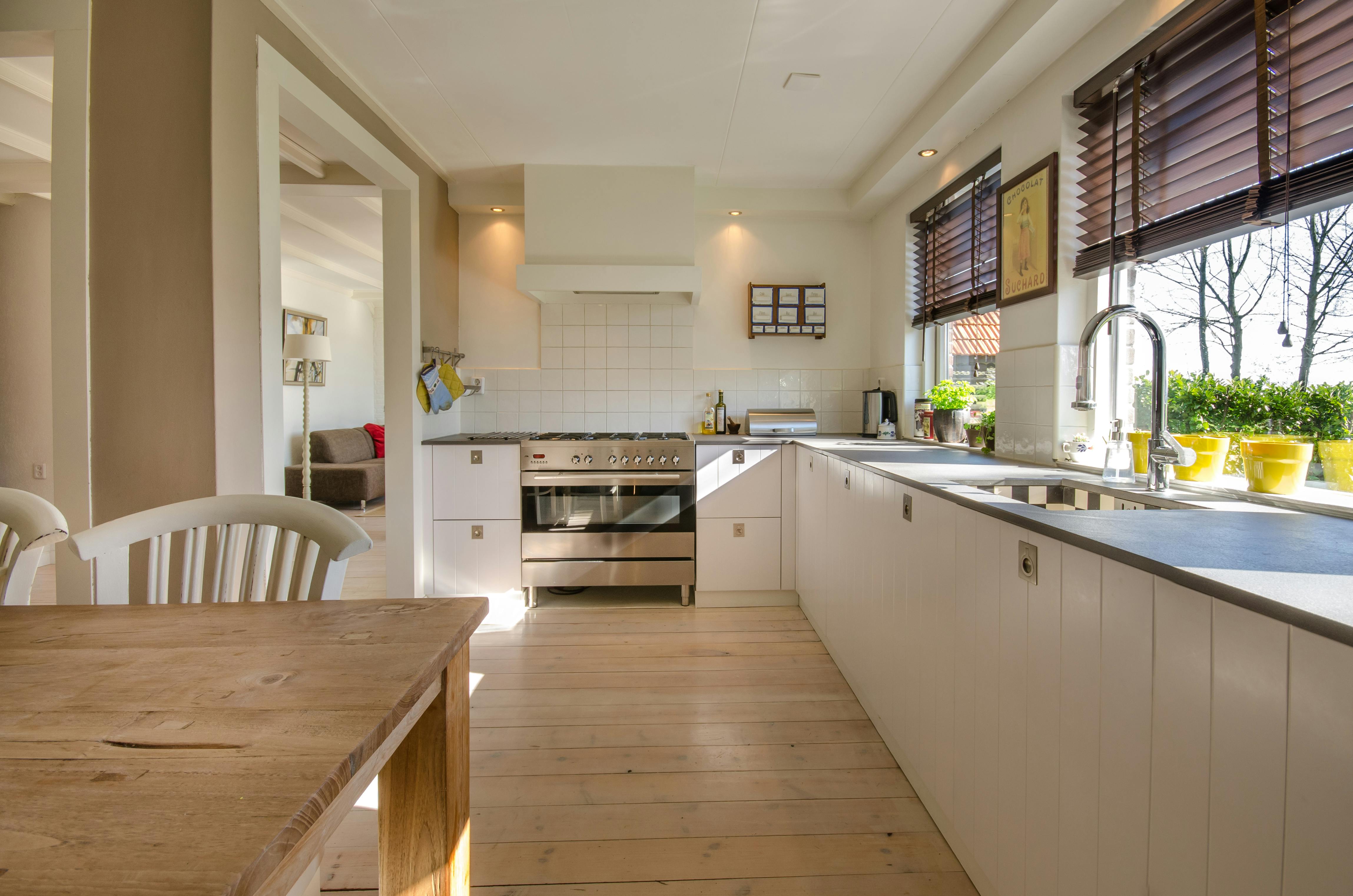Looking for ways to spruce up your home without putting yourself in the doghouse? Whether you’re getting ready to sell your home or want to spiff it up inexpensively for your own enjoyment, we’ve got 10 good strategies for you to consider.

Photo source: Pexels.com http://bit.ly/2Dp89Wq
The actual cost and payback for each project can vary, depending on both your home’s condition and overall real estate market values in your region of the country.
- Make your kitchen really cook.
The kitchen is still considered the heart of the home. Potential home buyers make a beeline for this room when they first view a home for sale, so make sure your kitchen looks clean and reasonably updated. For a few hundred pounds, you can replace the kitchen faucet set, add new cabinet door handles and update old lighting fixtures with brighter, more energy-efficient ones. If you’ve got a slightly larger budget, you can give the cabinets themselves a makeover. Rather than spring for a whole new cabinet system, which can be expensive, look into hiring a refacing company, many companies can remove cabinet doors and drawers, refinish the cabinet boxes and then add brand-new doors and drawers. With a fresh coat of paint over the whole set, your cabinets will look like new.
- Buff up the bath.
Next to the kitchen, bathrooms are often the most important rooms to update. They, too, can be improved without a lot of cash. Even simple things like a new toilet seat and a pedestal sink are easy for homeowners to install, and they make a big difference in the look of the bath. If your tub and shower are looking dingy, consider re-grouting the tile and replacing any chipped tiles. A more complete cover-up is a prefabricated tub and shower surround. These one-piece units may require professional installation but can still be cheaper than paying to re-tile walls and refinish a worn tub.
- Step up your storage.
Old houses, particularly, are notorious for their lack of closet space. If you have cramped storage areas, add do-it-yourself wire and laminate closet systems to bedrooms, pantries and entry closets. In the end, your closets will be more functional while you’re living in the house and will make your home look more customized to potential buyers when you’re ready to sell.
- Add a room in a week or less.
If you have a three-bedroom house with a den, the only reason the den can’t be considered a bedroom may be because it doesn’t have a closet. If you add a closet to that room, you’ve now got a four-bedroom house. That adds a lot of value.
- Mind the mechanics.
It’s often very worthwhile to hire an electrician and plumber for a couple of hours to look over your electrical services, wrap or fix loose wires, fix any faulty outlets, and check for and fix any water leaks, those details tell a buyer that someone has really taken care of the home and can really influence its price.
- Look underfoot.
Carpeting is another detail that can quickly update a home and make it look cleaner. A professional carpet cleaning is an inexpensive investment, especially if your rugs are in good shape and are neutral colours. If your carpet is showing serious wear, cover it with inexpensive, strategically placed area rugs. Unless it is truly hideous, most real estate agents don’t suggest replacing wall-to-wall carpeting right before you sell your house. The new homeowners may want to choose their own carpeting after they move in.
- Let there be light.
If you have boring recessed lights in your dining and living rooms, consider replacing one of the room’s lights with an eye-catching chandelier. Home stores offer a wide range of inexpensive, but nice-looking, ceiling fixtures these days.
- Reframe your entry.
Do you have a flimsy little knob on your main entry door? If so, spring for a substantial-looking handle-and-lock set. A nice, big piece of hardware on the front door signals to newcomers that this is a solid home.
- Consider curb appeal.
Although it sounds obvious, a nicely mowed lawn, a few well-placed shrubs and a swept driveway makes a great first impression. What buyers see when they first drive by your home is tremendously important. If you don’t have a green thumb, consider hiring a landscaper to install some new sod, plant a few evergreen shrubs and give your front yard a good cleanup. These kinds of changes can instantly change people’s perception of your home and, therefore, increase its value.





 Anybody in contact with the real estate market in the UK might have noticed until now that the housing crisis. The main issue is the huge gap between supply and demand,
Anybody in contact with the real estate market in the UK might have noticed until now that the housing crisis. The main issue is the huge gap between supply and demand, 
 Selling a house or putting it up for rent will get the owner through some trouble. One thing you should consider is raising the property’s price before you make any of these real estate moves.
Selling a house or putting it up for rent will get the owner through some trouble. One thing you should consider is raising the property’s price before you make any of these real estate moves.
